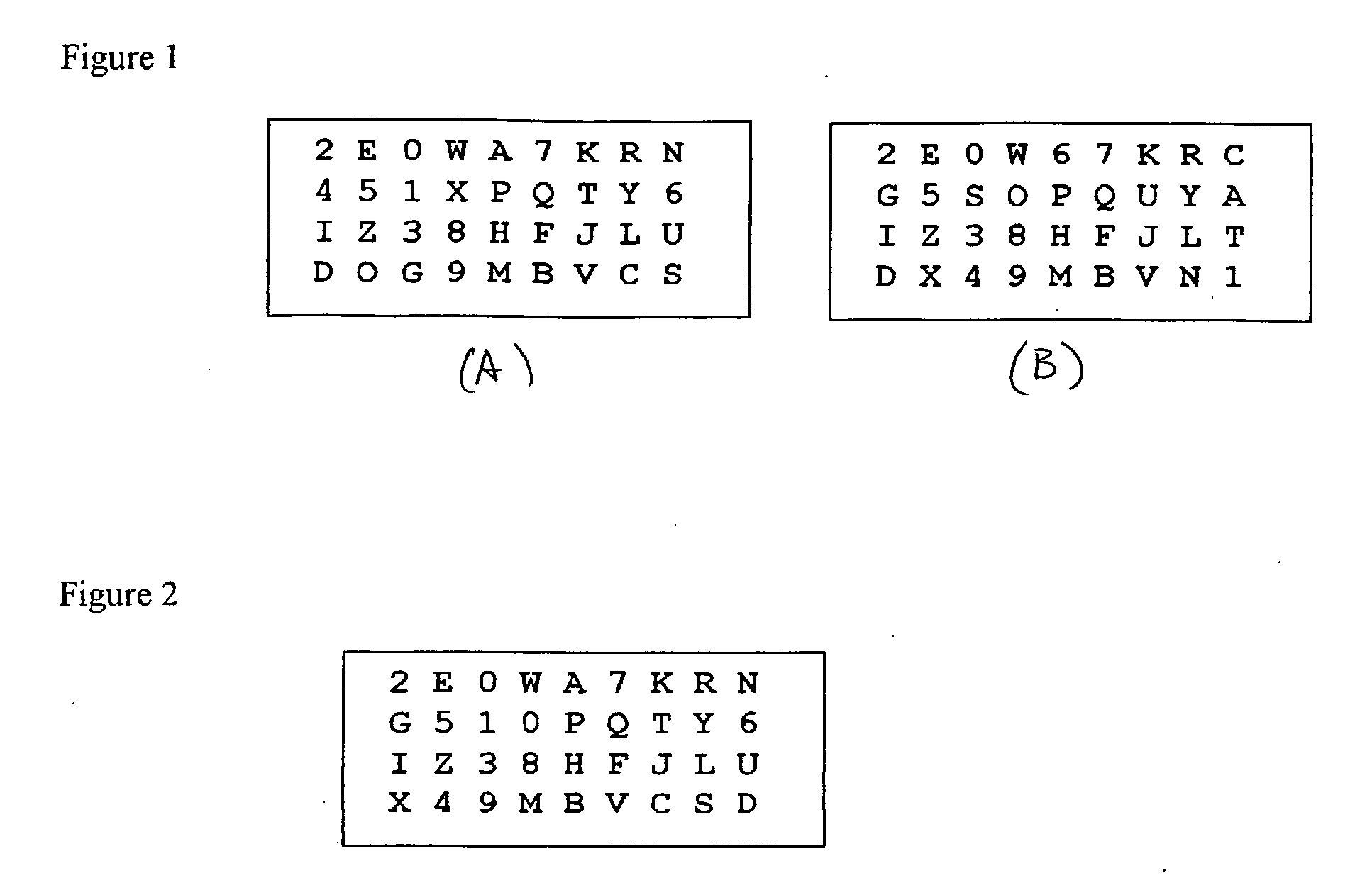Two-way authentication with non-disclosing password entry
a two-way authentication and password-based technology, applied in the field of password authentication, can solve the problems of difficult for an imposter to see and memorize the password, the biometric id is still new, and the security of the authorized user is not fully robust,
- Summary
- Abstract
- Description
- Claims
- Application Information
AI Technical Summary
Benefits of technology
Problems solved by technology
Method used
Image
Examples
Embodiment Construction
[0013]A method of two-way authentication that improves on U.S. Pat. No. 5,428,349, the specification of which patent is expressly included herein by reference, or with co-pending U.S. Patent Application Ser. No. 60 / 962,016, the specification of which is expressly included herein by reference, is described below.
[0014]When a user sets up an account with a host or authenticating authority, a key word of non-repeated characters, letters, symbols, patterns or other characteristics is chosen by the user from a large set of possible characteristics. It may be as simple as a single character or symbol to be placed at a pre-defined position of a character matrix, as described in the '349 patent. Another possibility is a pre-defined word or sequence of characters or symbols chosen during account set up. For example, it may be the word DOG at the beginning of the bottom row of the character matrix (FIG. 1a) or, in a second example, the character sequence CAT1 down the right-most column (FIG. ...
PUM
 Login to View More
Login to View More Abstract
Description
Claims
Application Information
 Login to View More
Login to View More - R&D
- Intellectual Property
- Life Sciences
- Materials
- Tech Scout
- Unparalleled Data Quality
- Higher Quality Content
- 60% Fewer Hallucinations
Browse by: Latest US Patents, China's latest patents, Technical Efficacy Thesaurus, Application Domain, Technology Topic, Popular Technical Reports.
© 2025 PatSnap. All rights reserved.Legal|Privacy policy|Modern Slavery Act Transparency Statement|Sitemap|About US| Contact US: help@patsnap.com


